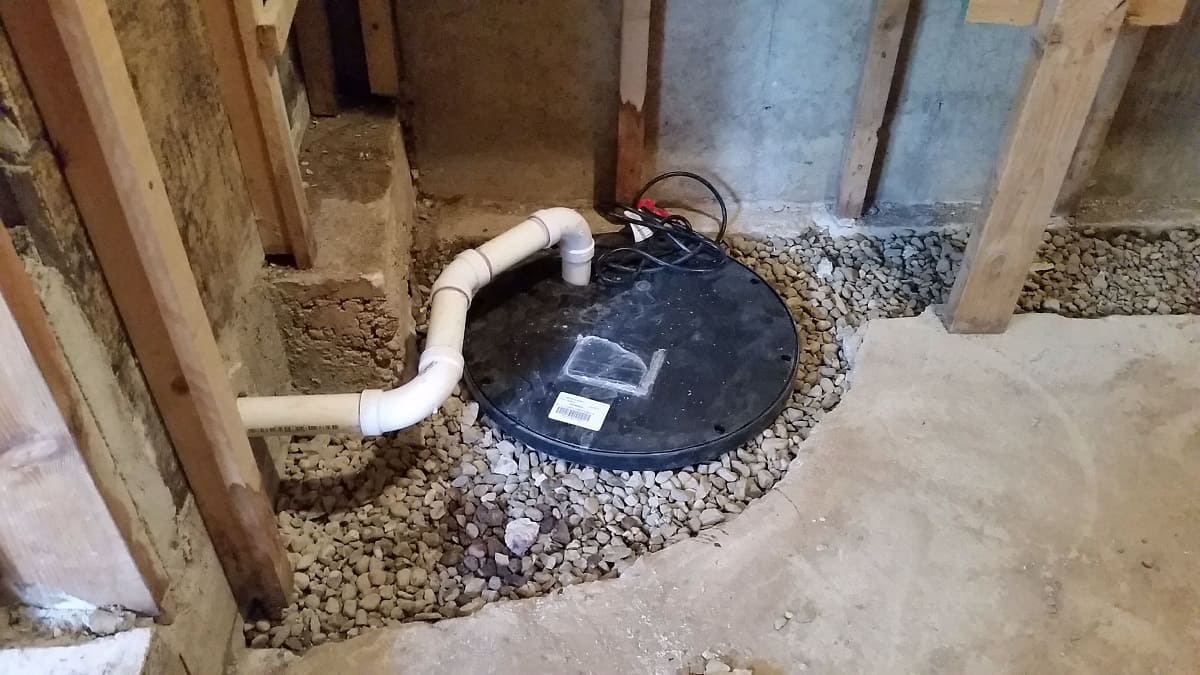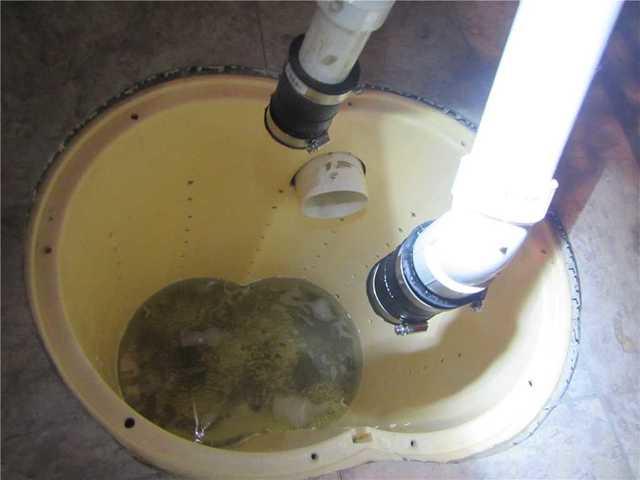Right here underneath you'll find a bunch of professional insight in regards to Keep Your Sump Pump Clean, It'll Keep You Dry.

Sump pumps are essential parts in lots of homes, especially in areas vulnerable to flooding or too much dampness. They help prevent water damage by effectively getting rid of excess water from basements or crawl spaces. However, like any other appliance, sump pumps require regular upkeep to guarantee they function successfully when required one of the most. Cleansing your sump pump is an essential part of its maintenance, and recognizing how to do it correctly can save you from expensive repairs and prospective disasters.
Introduction
Keeping a tidy sump pump is vital for its appropriate performance and longevity. Neglecting this important task can lead to clogs, malfunctions, and eventually, water damage to your building. For that reason, finding out just how to clean up a sump pump is critical for property owners who count on these devices to keep their cellars dry and protected.
Recognizing the Sump Pump
Before diving into the cleansing procedure, it's essential to have a standard understanding of how a sump pump works. Usually mounted in a pit or container listed below the basement flooring, a sump pump includes numerous essential parts, consisting of a pump, a float switch, and a discharge pipeline. When water collects in the pit, the float button triggers the pump, which then pumps the water out with the discharge pipe, far from the structure's foundation.
Indications of a Dirty Sump Pump
Recognizing when your sump pump needs cleansing is important for preventing prospective malfunctions. Some usual indications that indicate a filthy sump pump include unusual sounds throughout operation, minimized water flow, and noticeable debris in the pit. If you see any one of these symptoms, it's essential to cleanse your sump pump immediately to avoid any type of additional issues.
Planning for Cleaning
Prior to you start cleansing your sump pump, it's essential to take some security precautions. Start by shutting down the power to the pump to avoid any type of electrical crashes. In addition, wear proper safety equipment, such as handwear covers and goggles, to safeguard on your own from dust, debris, and prospective virus.
Detailed Overview to Cleansing a Sump Pump
Shutting Off the Power
Begin by detaching the power supply to the sump pump to stop any kind of accidents while cleansing.
Removing Debris and Dirt
Utilize a bucket or a scoop to get rid of any kind of noticeable debris, dust, or debris from the sump pit. Dispose of the debris properly to stop it from clogging the pump or the discharge pipe.
Cleansing the Pump and Float Change
As soon as the pit is clear of debris, meticulously remove the pump from the pit. Evaluate the pump and the float switch for any kind of indicators of damage or wear. Utilize a soft brush or cloth to clean up the surfaces and eliminate any kind of built up crud.
Purging the System
After cleaning up the pump and float button, flush the sump pit with clean water to remove any kind of remaining dust or debris. This will assist guarantee that the pump operates smoothly and successfully.
Checking for Appropriate Functioning
Prior to re-installing the pump, do a quick test to make certain that the float switch activates the pump correctly. Pour some water right into the sump pit and observe the pump's operation. If every little thing is working properly, you can reassemble the pump and reconnect the power supply.
Maintenance Tips to Maintain Your Sump Pump Clean
In addition to periodic cleaning, there are several upkeep pointers you can follow to keep your sump pump in ideal problem:
Final thought
Cleansing your sump pump is a critical element of its upkeep and makes certain that it runs efficiently when you require it the most. By adhering to the actions described in this overview and integrating routine maintenance right into your regimen, you can prolong the life-span of your sump pump and secure your home from water damages.
6 STEPS ON HOW TO CLEAN A SUMP PUMP PROPERLY
UNDERSTANDING SUMP PUMPS
Your sump pump plays a crucial role in protecting your home by managing and removing excess water. It primarily functions as a “shield”, guarding your basement against the damaging effects of water accumulation. The pump is housed in a sump pit in the lowest part of your basement, and its job is to pump out any water that collects there.
During heavy rainfalls or when snow melts rapidly, water can infiltrate your basement, posing potential risks like flooding, structural damage, and harmful mold growth. Here, the sump pump springs into action, pumping out the intruding water and directing it away from your home.
SAFETY FIRST
Before cleaning, remember to prioritize safety. Disconnect the sump pump from the power source to prevent any accidental electric shocks. Also, wear sturdy gloves to protect your hands from any sharp or dirty components within the pump.
REMOVE THE SUMP PUMP
After ensuring your safety, the next step is to remove the sump pump from its pit. Doing this might require careful maneuvering as you don’t want to damage any pump components. Once removed, clean the sump pit to remove any accumulated debris or sludge.
INSPECT THE PUMP
Inspect the pump for any visible signs of wear or damage. Check the power cord, float switch, and impeller housing. If any components look worn out or damaged, consider replacing them to ensure optimal performance.
CLEAN THE PUMP
Thoroughly clean the pump with warm, soapy water. Make sure to rid it of any dirt, gravel, or other debris that might impede its performance. You can use a toothbrush to clean the small, hard-to-reach parts of the pump.
REINSTALL THE SUMP PUMP
Reinstall the pump into the sump pit Make sure it’s positioned correctly to remove the water effectively Once it’s back in place, reconnect it to the power source TEST THE PUMP
Finally, pour some water into the pit to ensure the pump works correctly. It should start automatically and begin pumping out the water; if it doesn’t, check the power source and the positioning of the pump.
Remember, while cleaning your sump pump is an essential part of home maintenance, hiring a professional plumber for a thorough inspection and cleaning at least once a year is also important. This will ensure that your pump is in optimal condition, ready to protect your home from potential water damage.
BEST PRACTICES FOR CLEANING SUMP PUMP DISCHARGE PIPES
Regular Inspection: Regularly inspect your discharge pipes, especially during heavy rainfall or snowmelt periods. Look for any signs of blockage or damage. Early detection of problems can prevent serious issues down the line. Periodic Cleaning: Over time, sediment and debris can accumulate in the discharge pipes, impeding the flow of water. Regular cleaning helps keep the pipes clear and functioning efficiently. You can use a high-pressure water jet to effectively clean the pipes. Insulation During Winter: In colder climates, discharge pipes can freeze, blocking the outflow of water. Protect your discharge pipes from freezing temperatures by insulating them with foam pipe insulation. This will ensure the sump pump can continue to discharge water even in freezing conditions. Proper Positioning: The discharge pipe should be positioned to direct water away from your home’s foundation. Improper positioning can lead to water seeping back into the basement. Ensure the pipe is long enough and angled correctly. Installation of a Check Valve: A check valve prevents water from flowing back into your sump pit after the pump has pushed it out. Installing a check valve helps maintain the efficiency of your sump pump and reduces the risk of flooding. Minimize Pipe Turns: Every curve or turn in the discharge pipe can decrease the efficiency of water flow. By minimizing turns and bends in your discharge pipe, you can increase the efficiency of your sump pump. https://www.fullspeedplumbing.com/how-to-clean-a-sump-pump-properly9999/

I ran across that blog entry on while exploring the search engines. Appreciated our post? Please share it. Let another person check it out. Thank you so much for your time invested reading it.
Automated Marketing